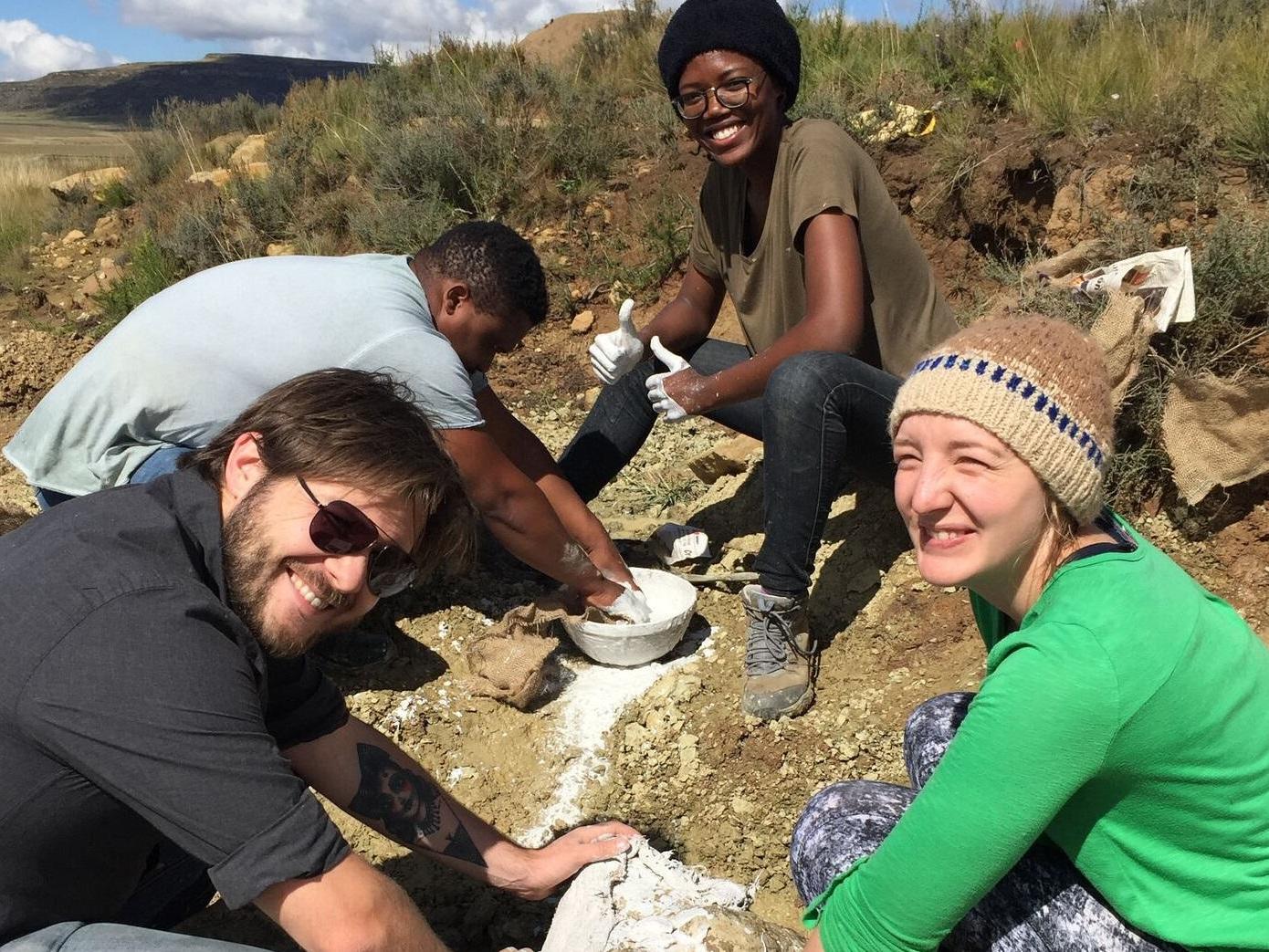
A new species of plant-eating dinosaur that roamed the Earth roughly 200 million years ago has been discovered in South Africa.
The relative of the Brontosaurus has been named Ledumahadi mafube – meaning “a giant thunderclap at dawn” in the Sesotho language of Free State province, where the fossils were found.
The previously unknown species was the largest land animal alive on Earth in the period, millions of years before Tyrannosaurus or Velociraptor came on the scene, scientists said.
It weighed 12 tonnes and stood around 13ft tall at the hips – roughly double the size of a large African elephant.
An international team of scientists, led by palaeontologist Professor Jonah Choiniere of South Africa's Witwatersrand University, revealed the findings in the journal Current Biology.
The team believes the specimen found represented a full-grown adult, about 14-years-old.
It is thought to be one of the closest relatives of sauropod dinosaurs, including the Brontosaurus. But the Ledumahadi mafube evolved its giant size independently from sauropods, and although it stood on four legs, its forelimbs would have been more crouched.
“It shows us that even as far back as 200 million years ago, these animals had already become the largest vertebrates to ever walk the Earth," said Professor Choiniere. “The evolution of sauropods isn’t quite as straightforward as we once thought. In fact, it appears that sauropodomorphs evolved four-legged postures at least twice before they gained the ability to walk with upright limbs, which undoubtedly helped make them so successful in an evolutionary sense.”

International team work on fossils in Free State province (Dr Pia Viglietti/SWNS)
Professor Roger Benson, of Oxford University, said it was an important breakthrough. “Many giant dinosaurs walked on four legs but had ancestors that walked on two legs. Scientists want to know about this evolutionary change, but amazingly, no-one came up with a simple method to tell how each dinosaur walked, until now.”
The dinosaur lived in the area around Clarens in South Africa’s Free State province. It is currently a scenic mountainous area, but looked much different at the time of the Ledumahadi mafube, with a flat, semi-arid landscape.
It is closely related to other gigantic dinosaurs from Argentina that lived at a similar time, which Prof Choiniere said reinforces the idea that the super-continent of Pangaea was assembled in the Early Jurassic period.
He added: “It shows how easily dinosaurs could have walked from Johannesburg to Buenos Aires at that time.”
Mmamoloko Kubayi-Ngubane, South Africa’s Minister of Science and Technology, says the discovery of the dinosaur underscores just how important South African palaeontology is to the world.
She added: “Not only does our country hold the cradle of humankind, but we also have fossils that help us understand the rise of the gigantic dinosaurs.”







